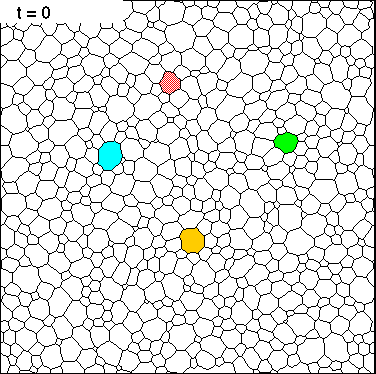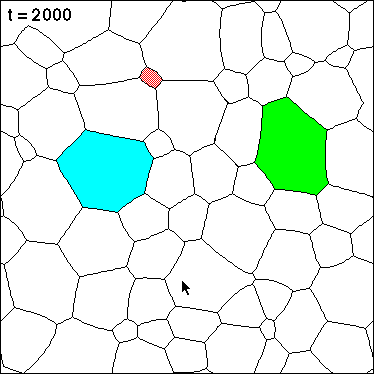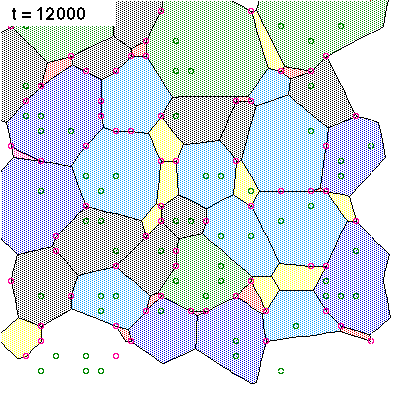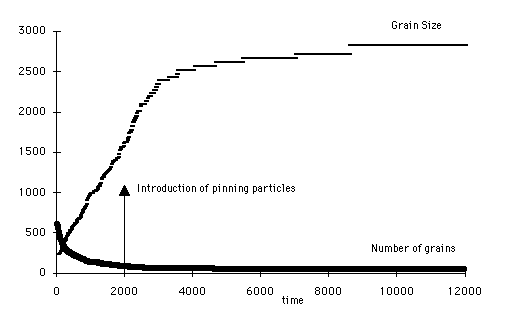
Further Reading:
An Outline of Structural Geology, 1976. Hobbs, Means & Williams p 73-104
Urai, Lister & Means 1986 Dynamic Recrystallisation of Minerals In : Mineral & Rock Deformation: Laboratory Studies Ed: Hobbs & Heard ,Geophysical Monograph 36.
Jessell & Lister 1990. A simulation of the temperature dependence of quartz fabrics. In: Deformation rheology and tectonics. Ed: Knipe & Rutter, Geol. Soc. London Special Publication No 54. 1)
Computer simulations of deformation processes.
The first part of the lab consists of a series of computer simulations of various grain scale deformation mechanisms & processes.
A) Static Grain Growth Simulation. This is a computer simulation of grain growth in a single phase rock, such as a quartzite or a marble, and was developed by Paul Bons. First of all go and have a look at the movie of grain growth, and then answer the question below. In this simulation the only driving force for grain boundary migration is the minimisation of surface energy via the minimisation of grain boundary curvature. The boundaries all migrate towards their centre of curvature. Static Grain Growth Movies: There are 2 movies called NORMAL GROWTH and PINNED GROWTH, and to run them double click on the icon and play with the slider control at the bottom of the window.
i) The NORMAL GROWTH movie shows the behaviour of a polycrystalline aggregate when left to its own devices, without deformation, at a high enough temperature that grain boundaries are mobile. As you can see the number of grains decreases, and hence the grain size goes up. Four grains have been coloured in so that you can follow them.

ii) The PINNED GROWTH takes over (at time =2000) from where the previous movie left off, except that a number of second phase particles have been added, and the grain boundaries find it hard to migrate through these particles. (These particles are green circles if they are found inside a grain, or red circles if they happen to be on a grain boundary). This is known as pinning and is very commonly observed in quartz-mica rocks, where the micas pin the grain boundaries. Notice how the grain growth virtually stops after a while. In this movie the colours of grain refer to the number of sides each grain posses (ie how many neighbours it has).

iii)

Start of simulation without pinning

End of simulation without pinning

End of simulation with pinning
